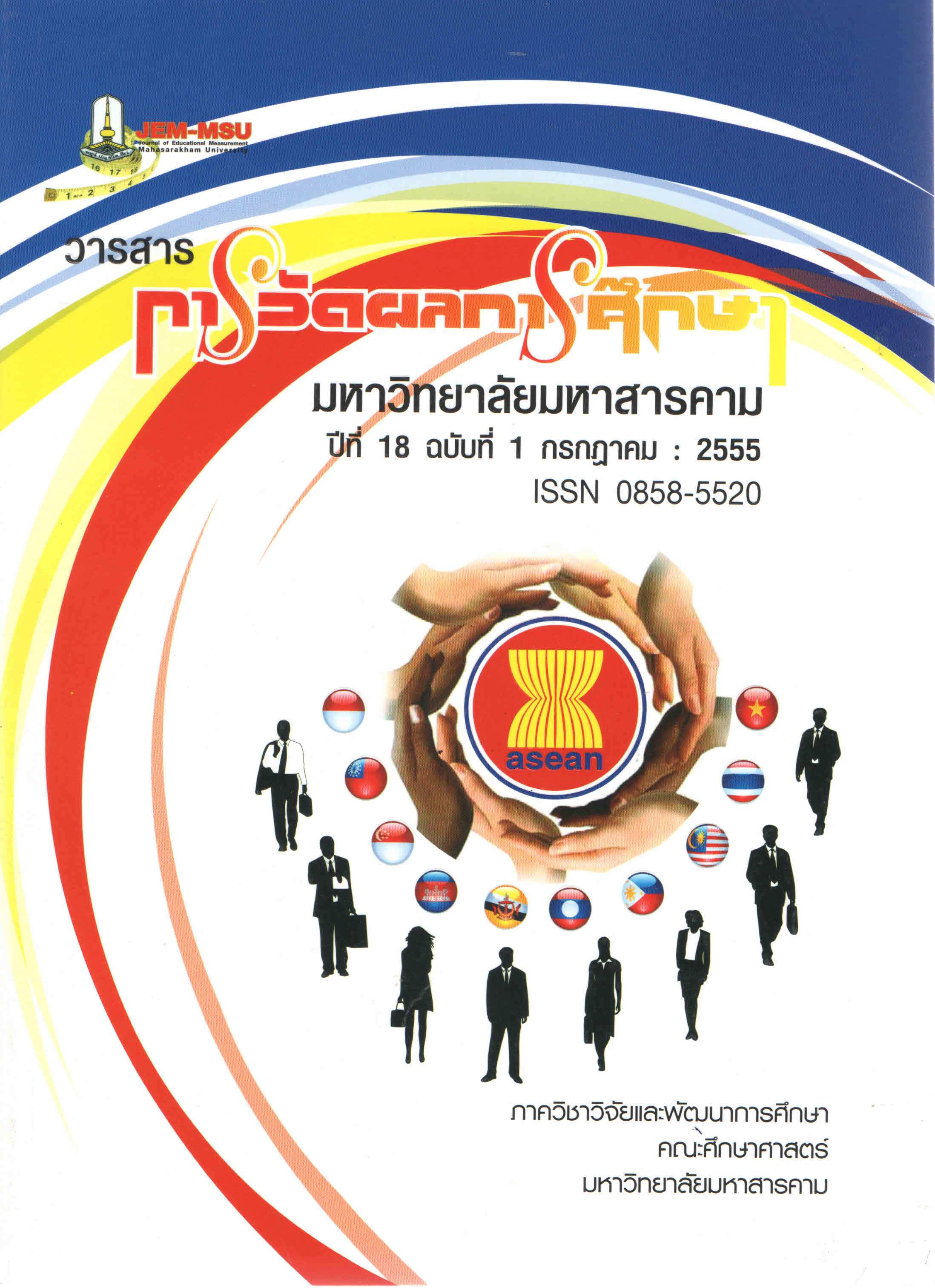Comparisons of Ability to Analysis Thinking and Critical Thinking of Mahasarakham University Undergraduate Students a Gender Year and Study Group Different.
Main Article Content
Abstract
The purpose of this study aims to compare ability about Analytical Thinking
and Critical Thinking of undergraduate students by different gender, year and group
studying. The sample for this study were 1,050 undergraduate students in
Mahasarakham university who were selected by multistage random sampling
technique. The instruments used in this study were the measurements of critical
thinking test which was four sets of multiple-choice test containing 26 items. They
had difficulty value range from .25 to .80 and discriminating power range from .22 to
.68. Their reliabilities were 0.73. According to analytical thinking test, there were five
sets of multiple-choice test containing 23 items. They had difficulty value range
from. 23 to .78 and discriminating power range from .20 to .50. Their reliabilities
were 0.66. The statistics used in the study were percentage, mean and standard
deviation. Three-way MANOVA was used for improving hypothesis.
The results of the study were as follows;
1. Ability in critical thinking of undergraduate students, females were
higher than males. Ability in analytical thinking of female and male undergraduate
students was not different. .01 level 0f significance.
2. The 1st-2nd undergraduate students and the 3rd-4th undergraduate
students were not different on ability of analytical thinking and critical thinking. .01
level 0f significance.
3. Ability about analytical thinking and critical thinking of the sciences
and technology students’ group were higher than the humanities and social
sciences students’ group and the healthy sciences students’ group. Ability about
analytical thinking and critical thinking of the humanities and social sciences
students’ group and the healthy sciences students’ group were not different. .01
level 0f significance
Article Details
The content and information contained in the published article in the Journal of Educational Measurement Mahasarakham University represent the opinions and responsibilities of the authors directly. The editorial board of the journal is not necessarily in agreement with or responsible for any of the content.
The articles, data, content, images, etc. that have been published in the Journal of Educational Measurement Mahasarakham University are copyrighted by the journal. If any individual or organization wishes to reproduce or perform any actions involving the entirety or any part of the content, they must obtain written permission from the Journal of Educational Measurement Mahasarakham University.

